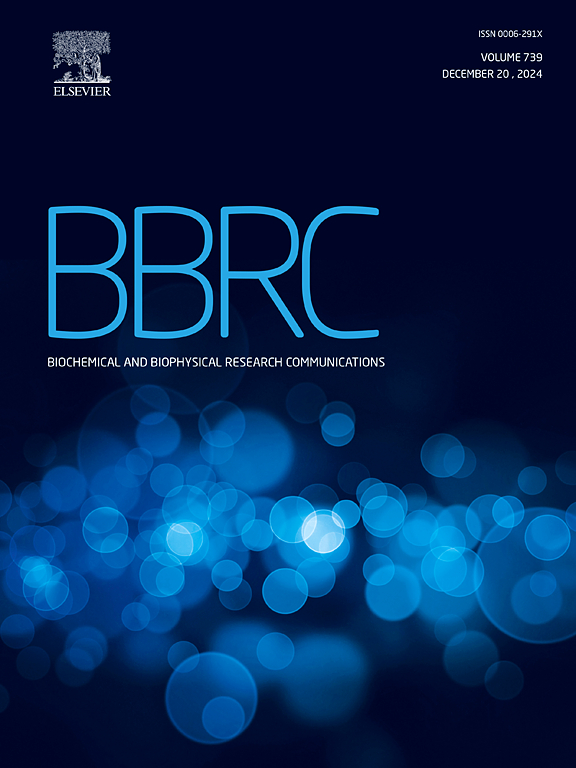Functions of the fusogenic and non-fusogenic activities of Syncytin-1 in human physiological and pathological processes
IF 2.5
3区 生物学
Q3 BIOCHEMISTRY & MOLECULAR BIOLOGY
Biochemical and biophysical research communications
Pub Date : 2025-04-02
DOI:10.1016/j.bbrc.2025.151746
引用次数: 0
Abstract
Human endogenous retroviruses (HERVs), which represent the genetic remnants of ancient viral infections, constitute approximately 8 % of the human genome. Among the proteins encoded by these viruses, Syncytin-1, encoded by the env gene of the HERV-W family, functions as a vital fusion protein in placental development, in which it plays a pivotal role in facilitating the fusion of trophoblast cells to form the syncytiotrophoblast that is essential for maintaining the structural integrity and functional viability of the placenta. Recent studies have shown that in addition to its expression in the placenta, Syncytin-1 also plays key roles in a range of different tissues and cell types, influencing biological processes such as cell proliferation, apoptosis, and immune regulation. Abnormal expression of Syncytin-1 has been closely linked to the onset, progression, and metastasis of tumors, potentially promoting tumor invasion via mechanisms involving cell fusion and modulation of the immune microenvironment. Moreover, associations have been established between Syncytin-1 and neurological disorders, including multiple sclerosis and schizophrenia, in which it modulates neuroinflammation. In this review, we systematically examine the molecular structure and functional attributes of Syncytin-1, emphasizing its roles in cell fusion, tumor progression, and immune regulation, and discuss its potential applications as a therapeutic target and diagnostic biomarker.
细胞分裂素-1 在人体生理和病理过程中的致熔活性和非致熔活性的功能
人类内源性逆转录病毒(herv)是古代病毒感染的遗传残余,约占人类基因组的8%。在这些病毒编码的蛋白中,由HERV-W家族的env基因编码的Syncytin-1是胎盘发育过程中至关重要的融合蛋白,在促进滋养层细胞融合形成合胞滋养层细胞方面起着关键作用,这对于维持胎盘的结构完整性和功能活力至关重要。最近的研究表明,除了在胎盘中表达外,Syncytin-1还在一系列不同的组织和细胞类型中发挥关键作用,影响细胞增殖、凋亡和免疫调节等生物学过程。Syncytin-1的异常表达与肿瘤的发生、进展和转移密切相关,可能通过涉及细胞融合和免疫微环境调节的机制促进肿瘤侵袭。此外,Syncytin-1与神经系统疾病(包括多发性硬化症和精神分裂症)之间已经建立了联系,在这些疾病中,Syncytin-1调节神经炎症。在这篇综述中,我们系统地研究了Syncytin-1的分子结构和功能属性,强调了它在细胞融合、肿瘤进展和免疫调节中的作用,并讨论了它作为治疗靶点和诊断生物标志物的潜在应用。
本文章由计算机程序翻译,如有差异,请以英文原文为准。
求助全文
约1分钟内获得全文
求助全文
来源期刊
CiteScore
6.10
自引率
0.00%
发文量
1400
审稿时长
14 days
期刊介绍:
Biochemical and Biophysical Research Communications is the premier international journal devoted to the very rapid dissemination of timely and significant experimental results in diverse fields of biological research. The development of the "Breakthroughs and Views" section brings the minireview format to the journal, and issues often contain collections of special interest manuscripts. BBRC is published weekly (52 issues/year).Research Areas now include: Biochemistry; biophysics; cell biology; developmental biology; immunology
; molecular biology; neurobiology; plant biology and proteomics

 求助内容:
求助内容: 应助结果提醒方式:
应助结果提醒方式:


